Digiato review: How much stronger is the iPhone 14 Pro than the previous generation?
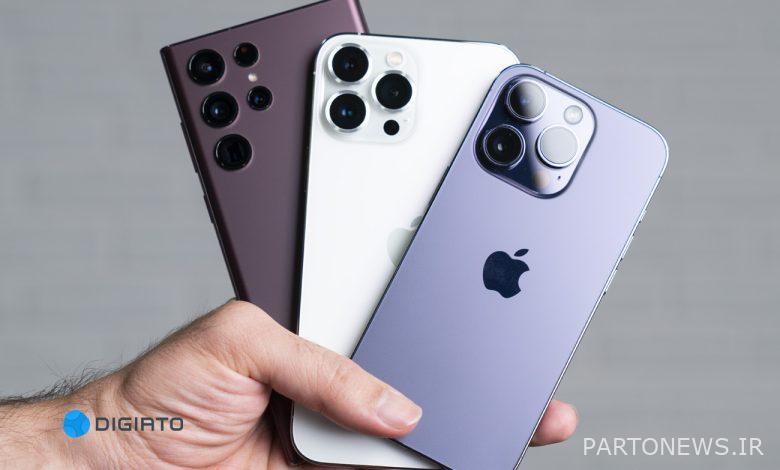
iPhone 14 Pro and iPhone 14 Pro Max have been launched as Apple’s newest flagships in the mobile market with the A16 Bionic chip. According to Apple’s claim, A16 Bionic is considered the most powerful chip in the mobile world and has made significant progress compared to its previous generation. To be more precise, Apple claims that the main processor (CPU) of this chip is 40% more powerful than competitors, but is Apple’s claim true?
The iPhone 14 Pro has just arrived at Digiato and we have started reviewing it. In this article, we are going to check the authenticity of Apple’s claim. On the other hand, we want to know how far the iPhone 14 Pro and the A16 Bionic chip have progressed compared to the previous generation. Therefore, in the following, we will compare the results of benchmark tests of iPhone 14 Pro with iPhone 13 Pro Max and Galaxy Z Fold 4 equipped with Snapdragon 8 Plus 1st generation chip.
To evaluate the hardware power, we have used reliable benchmark applications such as Antoto 9, Geekbench 5, 3D Mark and GFXBench. First, we go to the famous GeekBench benchmark, which is the main basis for Apple’s claims.
Geekbench 5
Geekbench application (GeekBench) can be considered as one of the most reliable and reliable references for measuring mobile and computer hardware performance. The points obtained in this application by Android and iOS phones are comparable. Performance Geekbench CPU Check the products and the result in two parts single core And multi-core Shows separately. You can see the test results of the three phones in question with Geekbench 5 below. All the tests were done under the same conditions by Digiato.
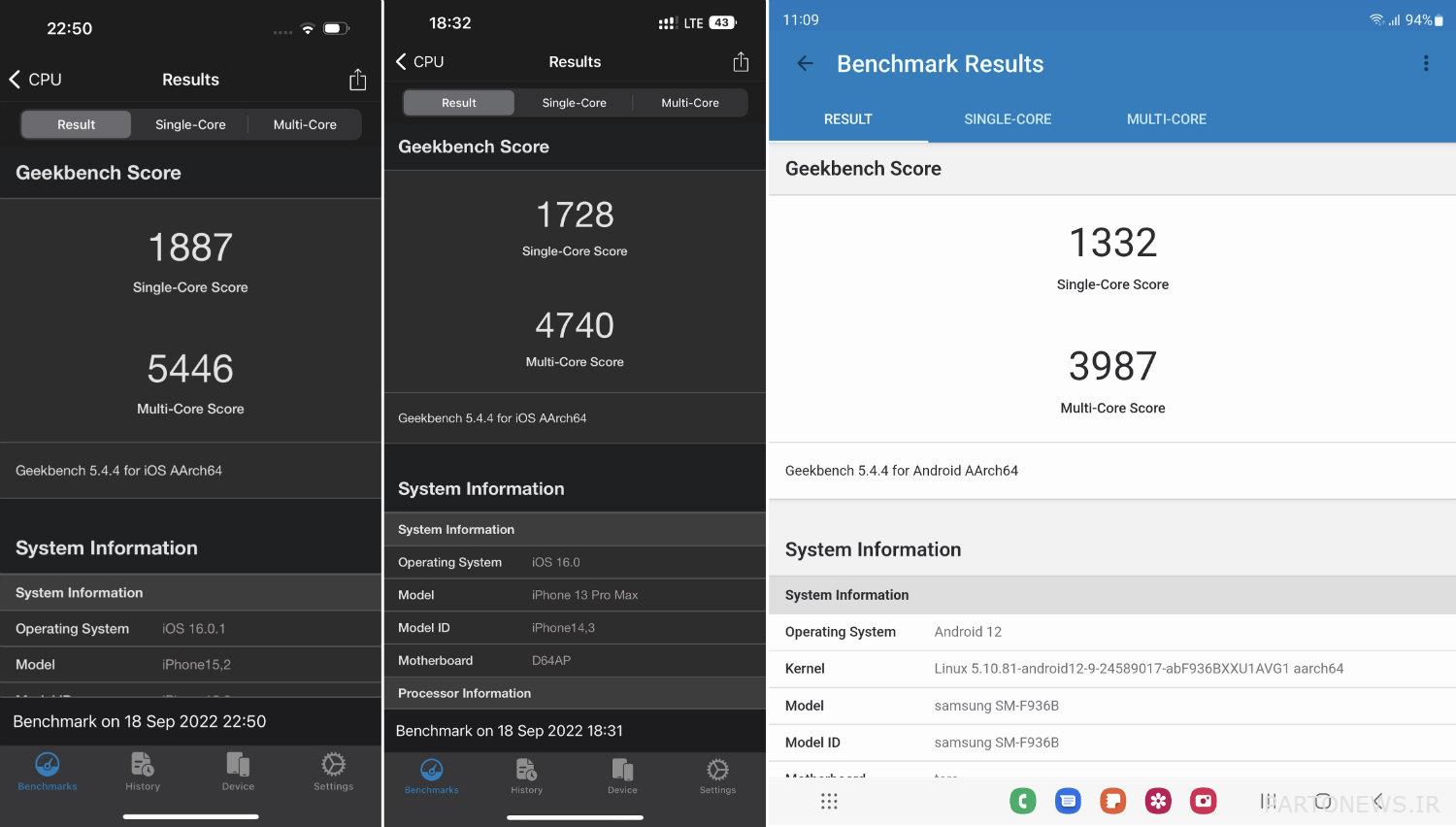
As you can see, in the single-core part, iPhone 14 Pro and iPhone 13 Pro Max are significantly ahead of their Android competitors. iPhone 14 Pro has been able to score 1887 obtain in the single-core section. This figure is relative to the score 1728 In iPhone 13 Pro Max, approx 9 percent more Is. Galaxy Z Fold 4 too 1332 points gained. Therefore, Apple’s claim of a 40% improvement in the performance of the A16 Bionic main processor can be confirmed.
It’s time for multi-core CPU performance, where the iPhone 14 Pro is the first in the mobile world A score of more than 5000 has obtained This phone managed to register points in Digiato tests 5446 It is a unique figure. iPhone 13 Pro Max is the first score 4740 had obtained in Digiato tests. As a result, we see a 15% improvement in the multi-core sector. Galaxy Z Fold 4 with points 3987 It doesn’t have anything special in this section and its scores in Geekbench 5 are much lower than Cupertino’s competitors. Interestingly, the results of the A16 Bionic processor are higher than the 11th generation Intel Core i7-1165G7 processor.
According to the above results, it can be accepted that the A16 Bionic chip, at least in terms of the main processor, is the most powerful chip in the mobile world, and in both single and multi-core performance modes, it is nearly 40% different from the most powerful chip in the Android world, i.e. Snapdragon 8 Plus 1st generation. . Of course, this difference will probably decrease soon with the release of phones equipped with the MediaTek Dimension 9000 Plus chip.
Entoto 9
Entoto Benchmark (Antutu) is one of the most popular smartphone performance measurement applications that performs various tests on the CPU, GPU and memory of the device. Based on the tests we conducted, the iPhone 14 Pro scored a good overall score 958531 get the For comparison, iPhone 13 Pro Max and Galaxy Z Fold 4 were also able to score respectively 845807 And 1031542 to earn
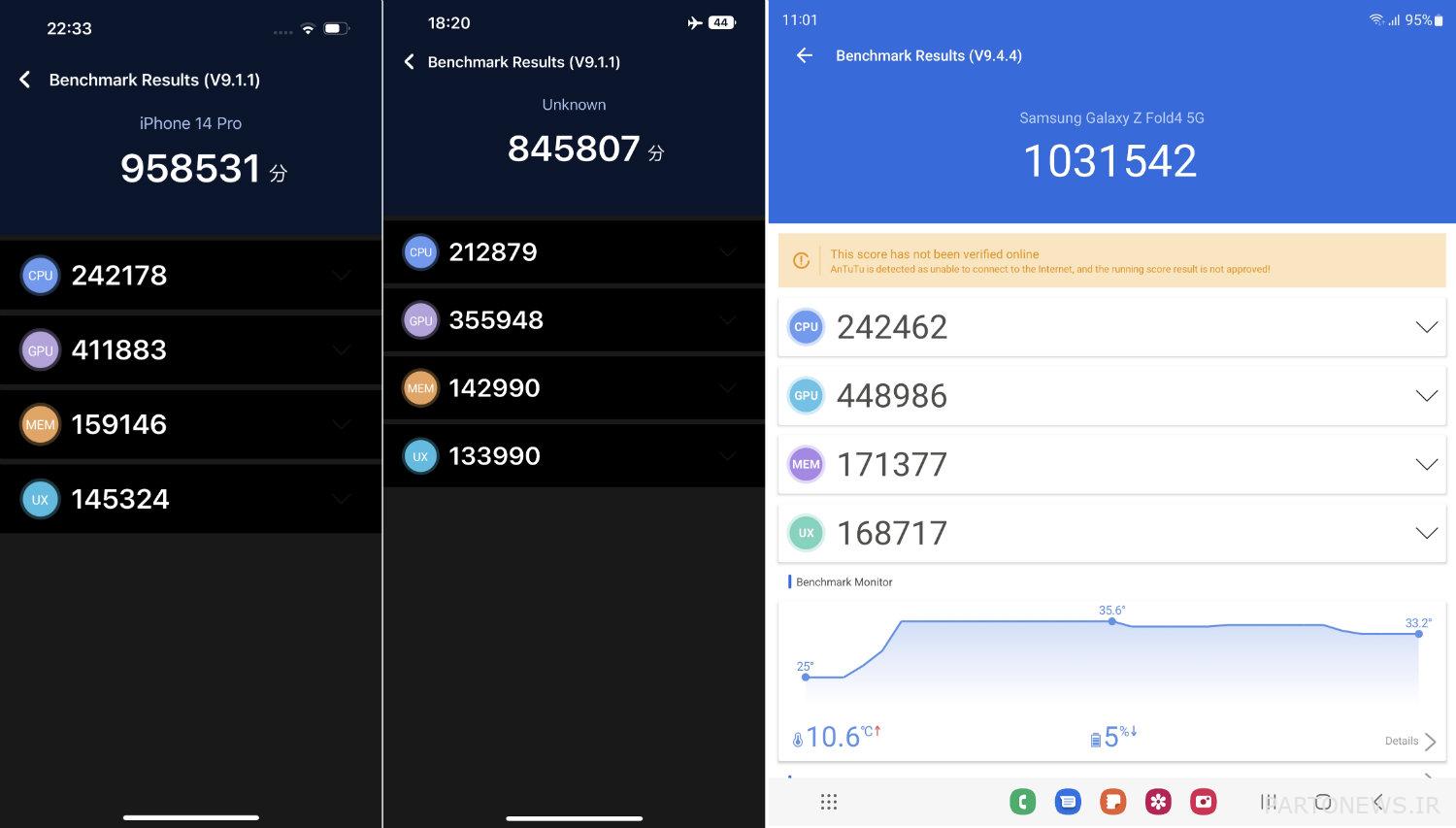
Of course, we should mention that based on Official announcement of Entoto websitethe results obtained by phones equipped with Android and iOS in this benchmark due to the difference in Graphics API And Cornell, are not comparable. However, the score obtained by iPhone 14 Pro compared to iPhone 13 Pro Max is close to 110 thousand points more and 13% progress shows that it is a significant figure.
TriDmark
TriDmark benchmark (3DMark) is considered a specialized and reliable reference for challenging graphics power and is even used to measure the performance of gaming systems. To compare the GPU performance of these three phones, the tests Wide Life Unlimited And Wide Life Extreme Unlimited We ran it on them. In Unlimited tests, the display resolution does not affect the benchmark result, and the results can be used to compare the performance of the GPU.
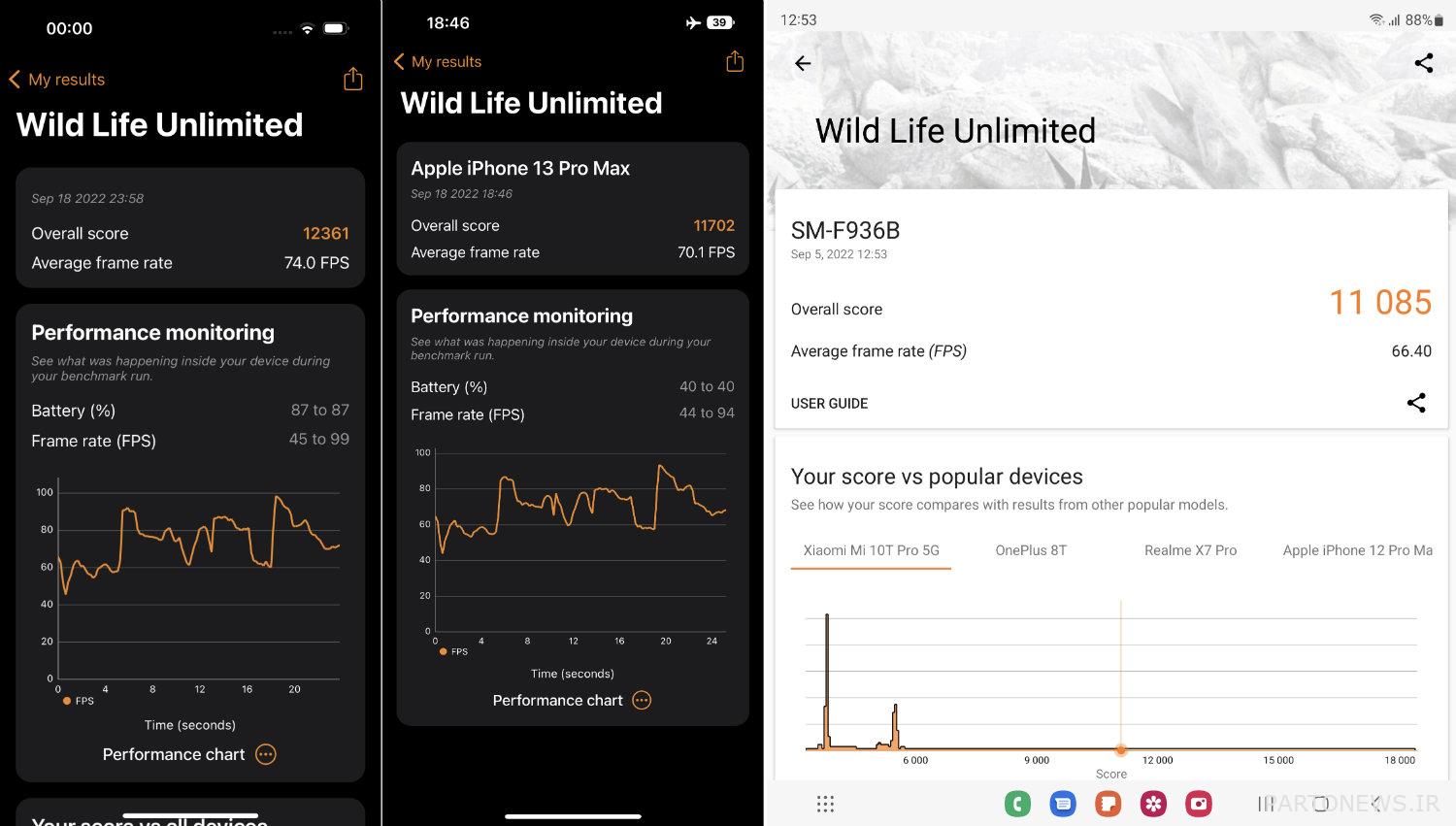
In the picture above, you can see the results of the Wide Life Unlimited test. iPhone 14 Pro and iPhone 13 Pro Max have scores equal to respectively 12361 And 11702 have registered As a result, we do not see a tangible improvement compared to before, and the score of the new generation of iPhones in this area is approx 6 percent more has been Galaxy Z Fold 4 with points 11085 It has a weaker performance than the iPhone 13 Pro Max, but this difference is by no means limited to CPU performance.
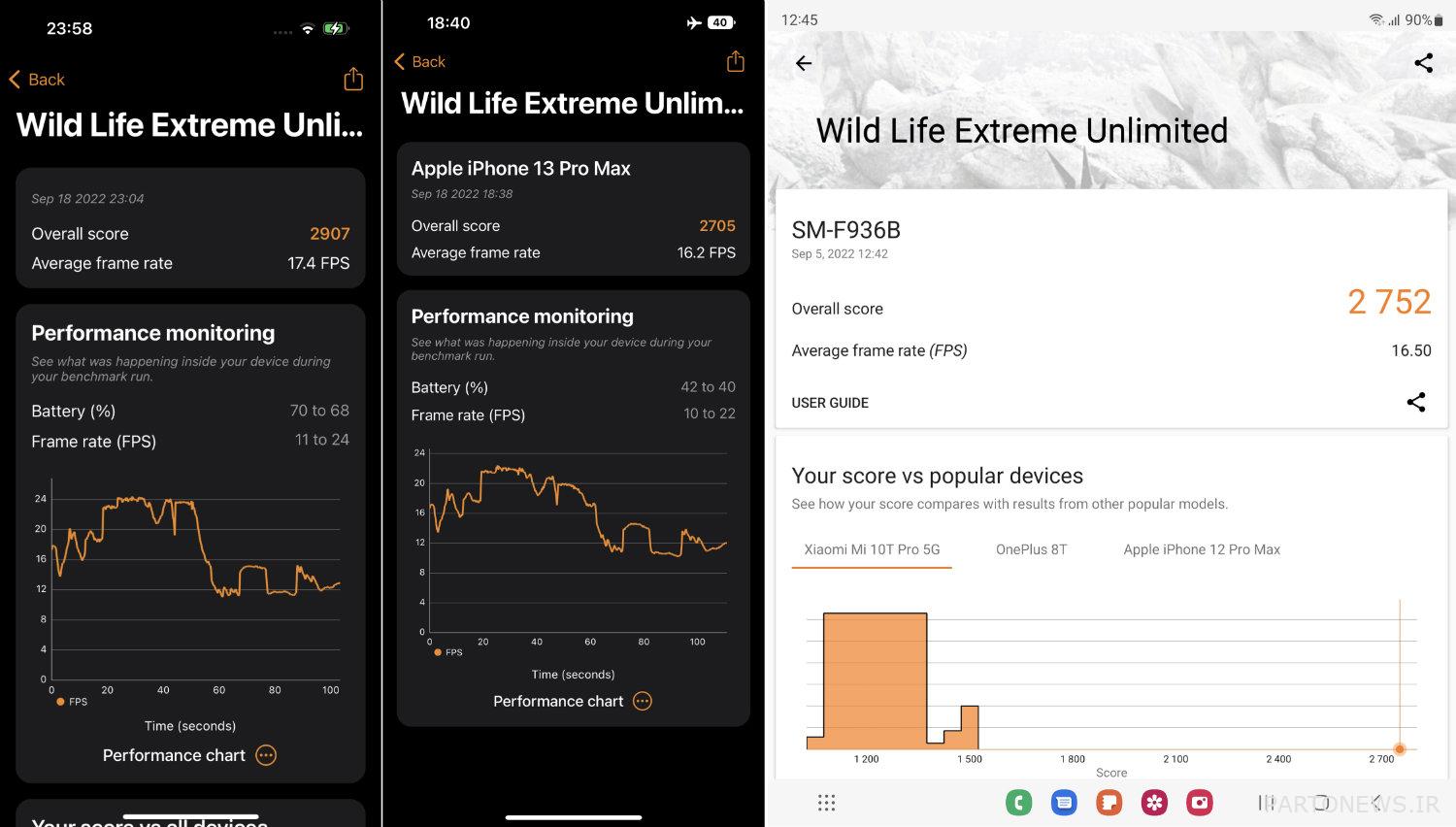
It’s time for the Wide Life Extreme Unlimited graphics test. This test puts more pressure on the phone’s hardware and determines its final rating. iPhone 14 Pro scored in this test 2907 to register The previous generation of this phone points 2705 had obtained, which means the witness in the said test 7% improvement of the most powerful iPhone We are compared to before. Samsung representative with points 2752 It has reduced the difference and appeared better than the iPhone 13 Pro Max. In general, it can be said that the Apple A16 Bionic graphics processor has not made much progress compared to the A15 Bionic and compared to its Android competitor. Less than 10% stronger Appears.
GFX Bench graphics benchmark
The GFXBench application is another reliable and well-known reference in the area of evaluating the graphic power of smartphones. In this section, we compare only the points obtained by iPhone 14 Pro and iPhone 13 Pro Max. In Digiato tests, we ran three different graphics tests of this benchmark on these two iPhones, and you can watch the results below.
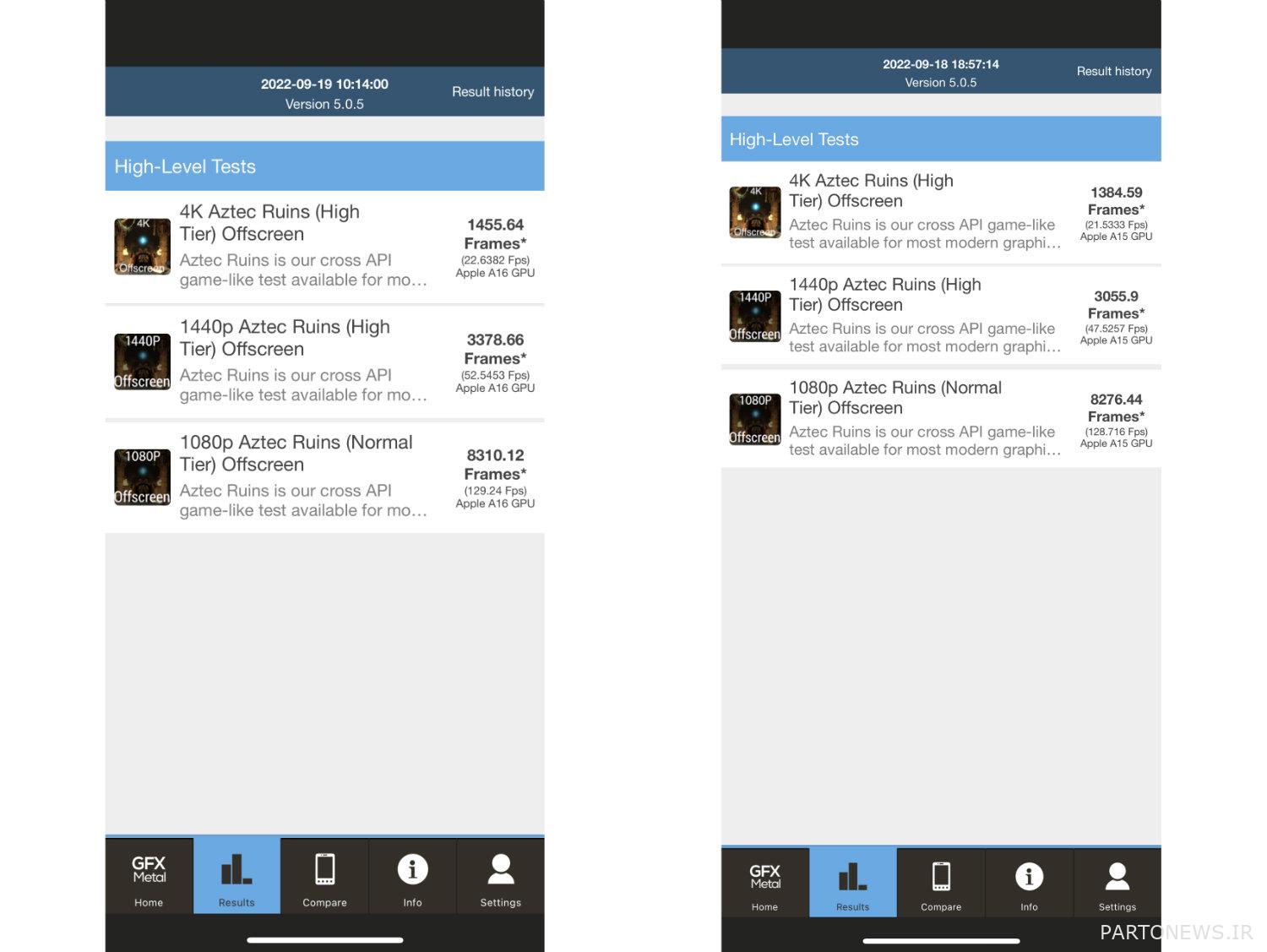
Surprisingly, the difference in the average frame rate of these two phones is so small that you can almost tell the difference between them Waiver did Frame rate difference in two tests only 1 frame And in the lighter test 5 frames Is. Therefore, while playing different games on iPhone 14 Pro and iPhone 13 Pro Max, you may not notice any difference in their performance.
Conclusion
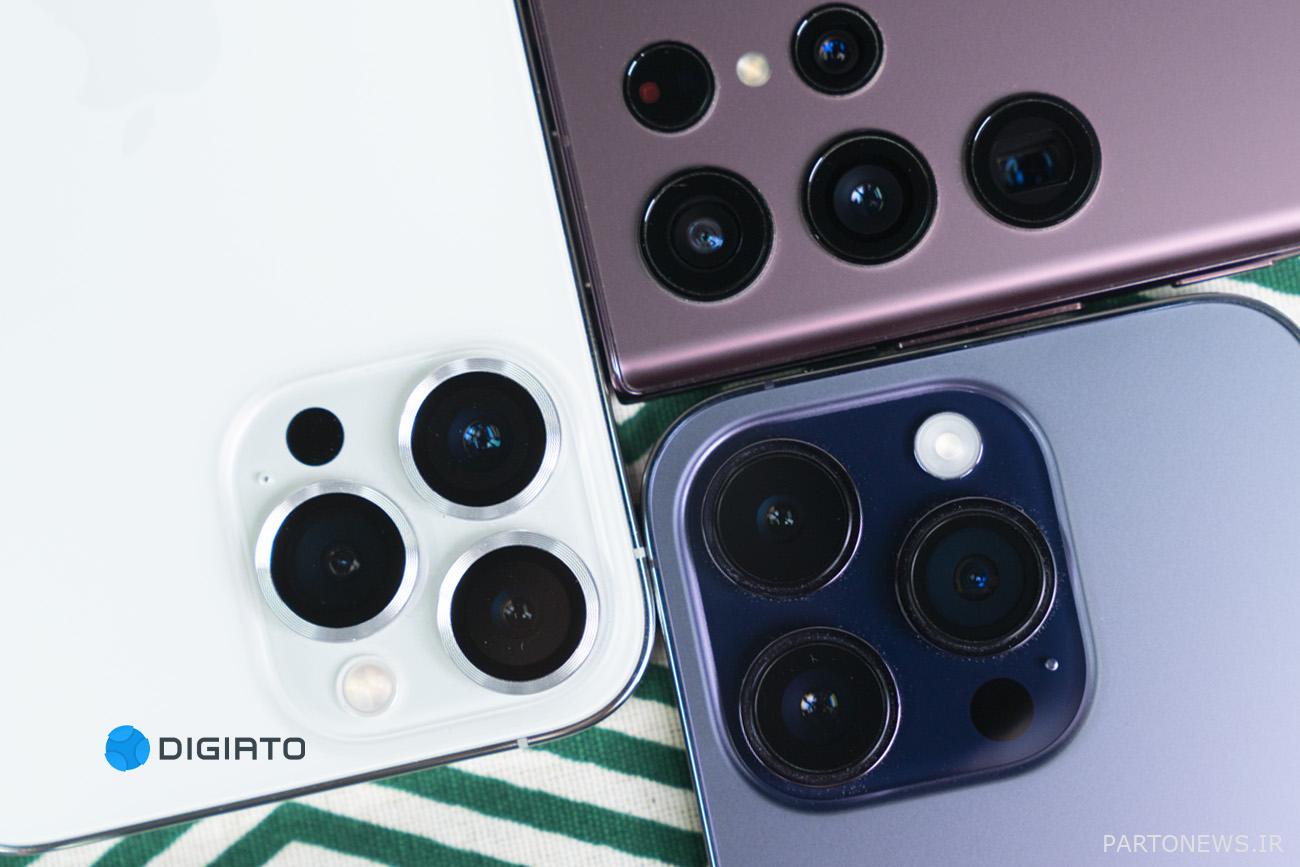
Apple’s claims about the A16 Bionic chipset are somewhat true. This is the chip The most powerful example in the mobile world It is considered and you can obviously count on it to do all the heavy work and play the games of the day. This chip will remain at the highest level of efficiency even for the next few years.
Although the most powerful chip in the world of Android still has a huge difference with the latest Apple chip in terms of the power of the main processor, but if we consider the total efficiency of the main processor and the graphics processor, the difference is much smaller. On the other hand, the processing power in mobile phones has reached such a level that all the flagships of the day easily meet all your needs and even a large part of the chipset power remains unused. In the table below, you can compare the benchmark results of iPhone 14 Pro, iPhone 13 Pro Max and Galaxy Z Fold 4 obtained in Digiato.
| phone name | Antutu 9 | GeekBench 5 Single-Core | GeekBench 5 Multi-Core | 3DMark WL Unlimited | 3DMark WLE Unlimited |
| iPhone 14 Pro | 958531 | 1887 | 5446 | 12361 | 2907 |
| iPhone 13 Pro Max | 845807 | 1728 | 4740 | 11702 | 2705 |
| Galaxy Z Fold 4 | 1031542 | 1332 | 3987 | 11085 | 2752 |
At the unveiling ceremony of the iPhone 14 family, Apple made another claim and said that the competitors – the same Androids – have not yet reached the A13 Bionic chip. This claim cannot be confirmed because the chips in the Android world are currently on par with the A14 Bionic chip in terms of main processor power and are much better in terms of graphics processing power.
However, Android and iOS are two different worlds with different users and different needs. According to the results we obtained at Digiato, the hardware power of the A16 Bionic chip is not significantly different from the previous generation and cannot be the main reason to buy this phone. It can be said that Apple has worked more on the optimization and energy consumption of this chip so that the new iPhones can charge more than the previous generation. You can read the full iPhone 14 Pro review on Digiato soon.

